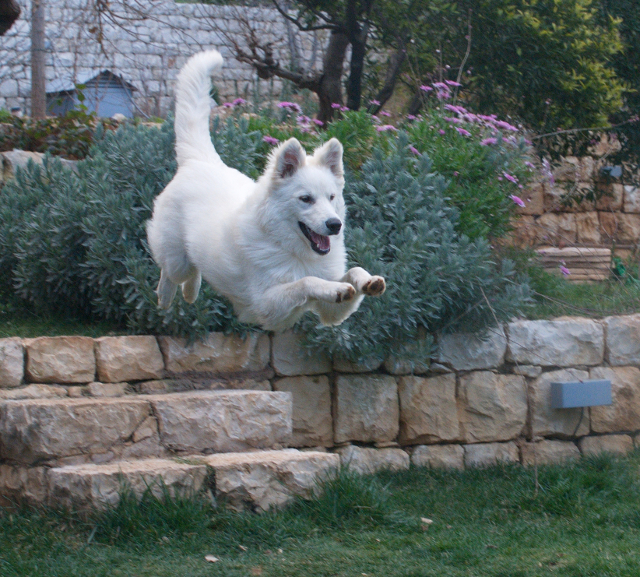How it works
We meet once every few days for a training lesson (approx 45 minutes) and at the end of each lesson, you are given homework. The homework requires a minimum of 2 sessions per day (5 to 10 minutes each). As you advance through the training stages you will then be able to join our group lessons. The group lessons are an excellent opportunity to work with your dog in gradually more and more challenging environments.
The technique
Nowadays, the dog training scene is divided between two often conflicting schools. Traditional trainers, on one hand, that mostly use punishment and more modern trainers, on the other hand, that use mostly rewards. The third category of trainers also claims using positive reinforcement while still using choke chains and e-collars. At Bright Animals, we take pride in using a humane and science-based approach.
Why positive training
Simply because you do not want your dog to respond because he is afraid but rather because he wants to. Also because traditional techniques can destroy a dog and make him unpredictable.

Will I always have to use treats?
Not necessarily. A reward can be food, but you can also use play or the environment. Furthermore, treats do not always work.
Picture walking your dog down a busy street. You meet another person walking a dog. Your dog suddenly becomes obsessed with the other dog. He no longer wants to eat, he no longer wants to sniff. His only wish to go play with the other dog. Treats, in this case, would not work. So how to train your dog? Simply use the other dog as a reward! Just as your dog learned to sit for a treat, he can also be taught to sit for the “permission” to go play with the other dog. After a while, your dog will be as attentive to you when he sees another dog as he is when you have a treat in your hand!

What’s next
Click here to contact us and book a private session.
Stuff you should know!
We train you and you train your dog
These private sessions are designed to help you learn how to train your own dog. You will be required to work with your dog at least twice a day to prepare for the following session.
A balanced lifestyle matters
Dog training cannot make up for an unhealthy lifestyle. A dog that leads a balanced lifestyle will often be better behaved than a neglected dog. So for training to work your dog must belong to a family and be a member of the human pack. To be considered part of the pack the dog should be able to eat in the den (your home), sleep and spend time in the den. If you have problems preventing you from keeping your dog inside then you might consider our potty training or energy management courses prior to embarking on an obedience course. An abused dog is not a good candidate for training.

How to prepare for your first session
- Find tasty and healthy treats. Otherwise, your trainer can also help you during your first session.
- Make sure the dog is receptive. Neither too excited nor too tired.
- Do not feed the dog for a few hours before training to help make the treats even more interesting.
- Call your trainer to communicate any questions you have about preparations well in advance of your session.
- Be ready for the fun to begin!
